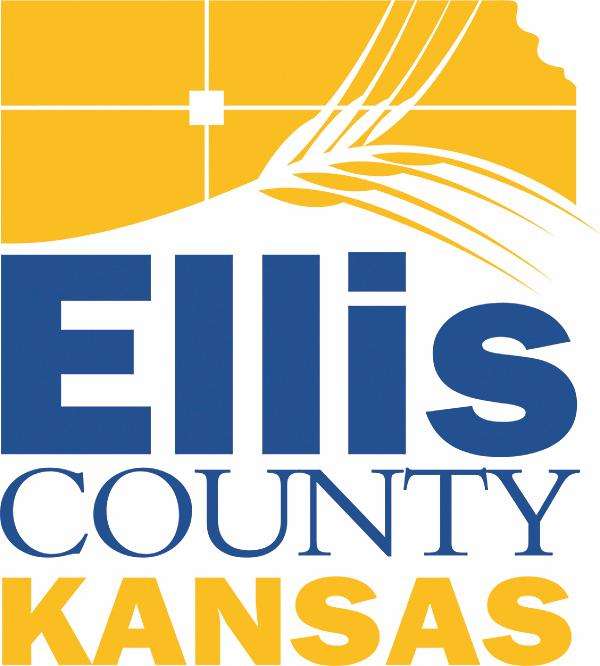
Hays Post
Taxpayers in Ellis County will begin receiving letters in the mail this week regarding the revenue neutral rate for each taxing entities in their community.
Nearly 37,000 letters will be sent out by the Ellis County Clerk’s office notifying residents of property taxes and values and the date, time and location of a public hearing notifying the public they plan to exceed the revenue neutral rate.
Under state law, local governments must hold hearings if they plan to bring in more revenue than the year before.
Ellis County, USD 489, the city of Hays and the Hays Recreation Commission will hold hearings later this year.
Bobbi Dreiling, Ellis County Clerk, said the notice is not a bill and instead is a, “ notice of whether your subdivisions plan to exceed the revenue neutral rate (RNR) for the upcoming budget.”
Ellis County Administrator Darin Myers said even though the notices are coming from the county clerk’s office, any questions that taxpayers have should be directed to the taxing entity in question.
If you are a taxpayer in Ellis County, you will be receiving a Revenue Neutral Rate notice from the county clerk’s office in August. In March 2021, the Kansas Legislature passed K.S.A. 79-2988, which requires Kansas County Clerks to send taxpayers notification of the revenue neutral rate compared to the proposed rate for each taxing subdivisions. Taxing subdivisions are prohibited from levying an ad valorem property tax that exceeds the RNR without first holding a public hearing and passing a resolution.
-------------
The notice will include:
• Information on specific property values and taxes
• Dates, times, and locations for upcoming public hearings for taxing subdivisions that plan to exceed the RNR
--------------
THIS NOTICE IS NOT A BILL and does not include information on special assessments that may be charged. It is solely a notice of whether your subdivisions plan to exceed the revenue neutral rate (RNR) for the upcoming budget.
What is Revenue Neutral?
Revenue neutral is when a taxing jurisdiction budgets the exact same amount of property tax revenue, in dollars, for the upcoming budget year as they did for the current year.
If a taxing jurisdiction plans to use more property tax revenue in the next budget year compared to the current year, even $1 more, they would exceed revenue neutral and need to hold a public hearing.
Why are we letting you know about the taxpayer notification form and RNR?
To help promote transparency.
What is the Revenue Neutral Rate?
The revenue neutral rate is the mill levy rate that would generate the exact same amount of property tax revenue as the year before, using the current tax year's total assessed valuation.
Why would taxing entities/jurisdictions want to increase revenue?
A jurisdiction does not only increase revenue to provide new services; they often need to increase property tax revenue to provide the same level of service as the year before.
While this new revenue neutral law (Senate Bill 13) is an important step for budget transparency, it does not take inflation into account. As property values are rising, so are the cost of goods and services.
To provide residents with the same (or better) level of service, it costs more. Taxing entities often "exceed revenue neutral" and use a modest increase in revenue to help pay for things like the increased cost of goods and/or services - like asphalt for streets, mowing services, and other community priorities.
If an entity were to stay revenue neutral every year, they would have to provide this year's services, with this year's prices, on last year's budget.
Will my property taxes increase as much as my appraised value increased?
Property values significantly increased this past year due to the market, but your taxes would not increase by that same amount, as most entities lower the mill levy to help re-balance the "appraised value to collected property revenue" scale. If an entity does need to increase the property revenues for the upcoming year, it should be by a modest amount compared to the increase in appraised property values.
What are taxing entities doing to offset the increase in Appraised Property Values?
The mill levy rate is the only influence that each taxing jurisdiction has on your tax bill; to help offset the increase in property values, these entities work to lower the mill levy rate. This way, there is not a 1:1 increase in your tax bill when property values experience an increase.
What exactly will be on the taxpayer notification form?
(A) The revenue neutral rate of each taxing subdivision relevant to the taxpayer’s property.
(B) The proposed property tax revenue needed to fund the proposed budget of the taxing subdivision - if the taxing subdivision notified the county clerk of its proposed intent to exceed its revenue neutral rate.
(C) The proposed tax rate based upon the proposed budget and the current year’s total assessed valuation of the taxing subdivision - if the taxing subdivision notified the County Clerk of its proposed intent to exceed its revenue neutral rate.
(D) The tax rate and property tax of each taxing subdivision on the taxpayer’s property from the previous year’s tax statement.
(E) The appraised value and assessed value of the taxpayer’s property for the current year.
(F) The estimates of the tax for the current tax year on the taxpayer’s property based on the revenue neutral rate of each taxing subdivision and any proposed tax rates that exceed the revenue neutral rates.
(G) The difference between the estimates of tax based on the proposed tax rate and the revenue neutral rate on the taxpayer’s property described in subparagraph (F) for any taxing subdivision that has a proposed tax rate that exceeds its revenue neutral rate; and
(H) The date, time, and location of the public hearing of the taxing subdivision, if the taxing subdivision notified the county clerk of its proposed intent to exceed its revenue neutral rate.






